

Glasgow's fine mediaeval cathedral is situated well away from the present day city centre. It was founded in ancient times in the high ground above the old town, alongside the Molendinar Burn in Townhead.
Glasgow Cathedral
The city's ancient cathedral is dedicated to Glasgow's patron saint, St Mungo (or Kentigern) who established a church on the site at the beginning of the 7th century and was buried there around the year 612.
The See of Glasgow had been established in 1115, with John Achaius being the first of twenty seven bishops who served the diocese until 9th January 1492 when Robert Blackadder became the first Metropolitan Archbishop of Glasgow. Pope Alexander VI had elevated the See to an Archdiocese on 9th October 1488. There followed five archbishops prior to the Reformation, overseeing the dioceses of Argyll and the Isles, Dunblane, Dunkeld and Galloway.
The Cathedral had been desecrated at the height of Reformation fervour in 1560, but on 21st August 1574 Glasgow's citizens voluntarily subscribed for its repair.
The stone tower and spire of the cathedral, illustrated below, were later additions to the structure following the collapse of an early wooden tower.
Drawing of tower and spire of Glasgow Cathedral
The cathedral’s earlier wooden steeple had been destroyed by a lightning strike in the early 1400’s.
Bishop William Lauder, who was in office from 1408 to 1425, built the present tower as far up as the battlements.
The octagonal spire was added by his successor, Bishop John Cameron, who served the diocese between 1426 and 1446.
Tomb and chapel of Saint Mungo in the crypt of Glasgow Cathedral
View of the sunlit interior of Glasgow Cathedral, 1838
Choir and Nave of Glasgow Cathedral c.1900
Glasgow Cathedral from the South-west c.1900
Grand Western Doorway of Glasgow Cathedral
A brief history of the pre-Reformation See of Glasgow was published in the The People's History of Glasgow of 1899.
While exiled in Paris, Archbishop James Beaton was the confidential agent of Mary Queen of Scots until her forced abdication in 1567. Mary had been Queen Consort of France until the death of King François II in December 1560, five months after the Archbishop's dramatic departure from Glasgow. Queen Mary naively left France for a very hostile anti-Catholic Scotland in August 1561.
Mary's nearest local kinsfolk in the Glasgow area were the Stuarts of Castlemilk , who had a long association with France and the "Auld Alliance" against England. The tragic queen resided with her relatives before the fateful Battle of Langside in May 1568, the loss of which led to her lengthy imprisonment and eventual execution.
Excavations under the floor of the Cathedral's crypt have uncovered Catholic artefacts hidden at the time of the Reformation, including a copper mortar and iron pestle which would have been used for the preparation of incense to be used in religous services.
Mortar and pestle excavated from crypt of Glasgow Cathedral
Charcoal drawing of Glasgow Cathedral
Map of Glasgow Cathedral Precinct as it would have appeared c.1547
The map above is a Victorian representation of the area surrounding the Cathedral in 1547.
It was created from original records by Sir James Marwick who was Town Clerk of Glasgow from 1873 to 1903.
Ruins of Bishop's Castle at Glasgow Cathedral
The castle was first mentioned in 1258 in the Chartulary of Glasgow as the residence of Bishop William de Bondington. Ruins of St Nicholas Hospital behind the Great Tower of the Bishop's Castle
The Great Tower of the Bishop’s Castle, illustrated above, was erected by Bishop John Cameron in the 1430’s, around the same time as the cathedral spire.
Glasgow's oldest house, Provand's Lordship, is situated on the west side of Castle Street, close to the Cathedral. It was built in 1471 as part of the Hospital of St. Nicholas and is all that now remains of that institution. Provand's Lordship
The house was owned by Provand's Lordship Society until 1978, when the City Council agreed to take it over to relieve the Society of the financial burden. The Council carried out an extensive £200,000 refurbishment which was completed in June 1983, after which the building was opened to the public as a museum.
Domestic architecture of the 15th century was purely functional and was not regarded as an art form. The mediaeval churches aspiring to the heavens where in a different category altogether, with designs which were open to continental influences from pre-Reformation Catholic Europe. In 1993 a second phase of renovation commenced, to restore the ancient cloisters and re-create the ancient St Nicholas physic garden to the rear. The work was completed in May 1995 at a cost of £175,000. There is now a covered walkway at the north and west walls, as well as cobbled pathways through the beautiful herb garden. View of houses in on west side of Castle Street, 1843
View of the castle's Great Tower with Glasgow Cathedral in the background
The area to the east of the Cathedral, shown on the map as Wester Craigs, was to be later developed as the site of the Glasgow Necropolis.
Molendinar Burn flowing past Cathedral, approaching Bridge of Sighs to Necropolis
Engraving showing the Bridge of Sighs carrying pathway over the Molendinar Burn
Walkways beneath the Bridge of Sighs at Molendinar Burn
Map of High Street, Glasgow, as it would have appeared c.1547
High Street is shown in the map as "Street from Mercat Cross to Metropolitan Church".
Birds eye view of College and original Blackfrairs Church
Engraving showing front and rear views of Blackfriars Church, built in 1702
The Blackfriars monastery was destroyed in the summer of 1560 and the clergy who had lived in the cloisters were dispersed.
The church survived as a Presbyterian kirk until 29th October 1670 when it was hit by lightning and left as a ruin for some years, unfit for use as a place of worship.
'A Prospect of the entry into the Blackfriars Church Glasgow, March 1st 1736'
Grayfriars Wynd and Blackfriars Wynd, 1807
The sites of the old monastic communities were still remembered in street names a few centuries after their disappearance.
Site of former Franciscan Monastery, Grayfriars Wynd
The Franciscan friars' presence in Scotland dates back to 1224, during the lifetime of the order's founder, St. Francis of Assisi.
The land and buildings of the Dominican Blackfriars were acquired by Glasgow University in 1572, the same year as the Cathedral was first used as a Presbyterian place of worship.
Twenty years after the obliteration of most of the area's ecclesiastical buildings, the Protestant clergy were still in favour of the total destruction of the Cathedral because of its Roman Catholic origins. In 1579 the magistrates of Glasgow agreed to their request for its demolition, but were prevented from carrying it out by the "incorporations of the city".
Proposal for the destruction of Glasgow Cathedral in 1579
The painting below, 'Defence of the Cathedral by the Trades House' by David Roberts (1796-1863), depicts the events of 1579 when the Cathedral was in danger of being destroyed by the Calvinist zealots who viewed the ancient structure as as a monument to Catholic 'idolatry'. The painting shows the defensive forces gathering around the Western Tower, which was demolished at the end of the 1840's.
'Defence of the Cathedral by the Trades House' by David Roberts
View of College Buildings when Glasgow University was situated on High Street
Glasgow University was established on 4th January 1450 by a Bull granted by Pope Nicholas to Bishop William Turnbull. Classes commenced in 1451 in the crypt of the Cathedral.
Old gateway of Glasgow University with arms of King Charles II
Gateway of Glasgow University when used as entrance for College Station
After demolition, the remains of the old gateway and the gilded arms of King Charles II were incorporated into the gatehouse of the new university campus at Gilmorehill. The expense of re-erecting these salvaged remnants was met by Sir William Pearce, after whom the gatehouse was named "Pearce Lodge", when it was completed in 1888. Entrance and clock tower of Glasgow University showing gateway now reconstructed at Pearce Lodge
Inner Court of the old Glasgow University
Crypt of Glasgow Cathedral were Glasgow University was founded.
Fortunately the old college buildings survived into the age of photography before their demolition.
Photographs of the old buildings of Glasgow University
The University of Glasgow's Hunterian Museum was designed by the architect William Stark in 1804 and opened in 1807. The Museum contained the collection of William Hunter, a distinguished physician based in London, who bequeathed it to the university in 1783. Original Hunterian Museum, Glasgow University
St Mungo Museum & Visitor Centre
In 1993 at a cost of over £4 million, the St Mungo Museum of Religious Art was opened to the public. It was built on the site of the Bishop's Castle, which was later replaced with the first Royal Infimary, which was also demolished. The architects, Page and Park of Glasgow created a 5 storey stone museum in period style to fit in to the Cathedral precinct.
The main attraction for a long period was Salvador Dali's masterpiece "Christ of St John of the Cross", which was returned to the refurbished Kelvingrove Art Gallery in 2006.
As well as the cathedral, there are other churches, both active and redundant, in Townhead, which is situated immediately north of the Merchant City, with the M8 motorway running straight through it. St Mungo's Church, Parson Street, Townhead
St Mungo's Church, which is dedicated to the city's patron saint, was completed in 1869 to the designs of George Goldie. It was built in an unusual Gothic style with an attractive cream sandstone and features a series of lancet arches along the frontage. Inside the church you can see some of Goldie's elaborate sculptural additions and finishes.
When he first came to Glasgow, Charles Eyre's title was titular Bishop of Anazarba, Apostolic Delegate for Scotland and Administrator Apostolic of the Western District.
Windows at St Mungo's Church, Parson Street, Townhead
Parson Street was the birthplace of Glasgow's most famous architect, Charles Rennie Mackintosh, in 1868.
Mackintosh assisted in the design of Martyrs School, which was completed in 1898.
Martyrs School, Parson Street, Townhead
Barony Church, High Street
The Church of Scotland's Barony Church, which was dedicated in April 1889, replaced an earlier church situated just south of the Cathedral.
The new church, situated at the corner of High Street and Rottenrow, was designed by J.J. Burnet and J.A. Campbell in the Scottish vernacular style.
It is now used as a function hall by Strathclyde University, who have many buildings in the vicinity.
Engraving of Barony Church, Townhead
Early 1950's view of trolleybus passing Barony Church and Royal Infirmary
The original Barony Church (below) was built for the residents of the landward areas of the city, which formed a distinct parish covering an extensive area known as the Barony of Glasgow. The congregation gathered in the crypt of the Cathedral until 1798 when their own church was completed to the designs of James Adam.
Original Barony Church with Cathedral in the background
Glasgow Evangelical Church
The Glasgow Evangelical Church, formerly known as Barony North Church, is situated in the pedestrianised Cathedral Square, from which it took another of its previous titles, Cathedral Square UP Church.
One of Glasgow's recent architectural losses, Townhead Library, was situated in the shadow of a motorway flyover.
Townhead Library
It was fashioned as an Italianate pavilion by John Fairweather, who was later to specialise in cinemas and theatres. The reading room had a most attractive arched ceiling with rooflights, while the lending library had an ornate glass dome overhead.
The library was officially opened on 4th July, 1907 by Sir James Fleming.
1850's map of Townhead, Glasgow
Engraving showing communal washing green close to Glasgow Cathedral
Aerial view of Royal Infirmary, Glasgow Cathedral and Necropolis
This engraving shows a view of the city from Craigpark to the east of Townhead. The "Lands of Craigpark" are now part of the district of Dennistoun. The Royal Infirmary can be seen in the background.
View of Townhead and Glasgow Cathedral from Craigpark, 1838
Engraving of Glasgow Cathedral from 1811

The present structure was built in the 12th and 13th centuries over a long number of years and is Glasgow's best example of the intricacies of mediaeval architecture. The cathedral was consecrated on 6th July 1197, during Bishop Joceline's term in office.
It replaced an earlier cathedral church which originated in 1124, when Bishop John Achaius began work on a small place of worship built of stone and wood which was solemnly dedicated to its patron, St. Mungo, in the presence of King David and his Court on 7th July 1136.
The final pre-Reformation custodian was Archbishop James Beaton who fled to Paris in 1560, taking with him the registers of the diocese together with the Cathedral's relics and valuable ornamentation.
There was an intermittent number of Protestant bishops until 1689 when Presbyterianism became the established religion of Scotland.
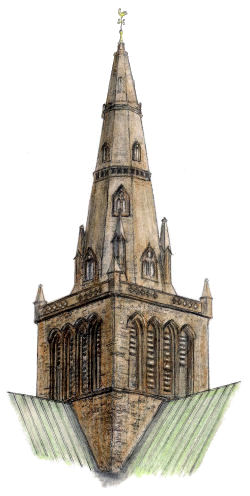
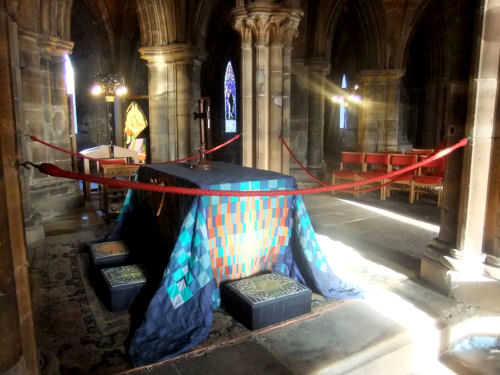
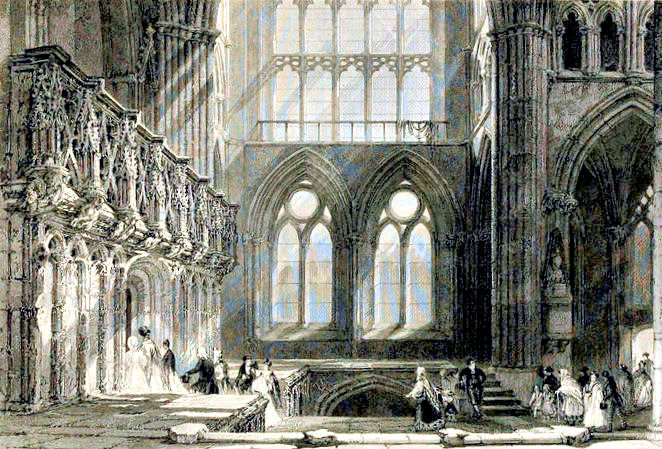
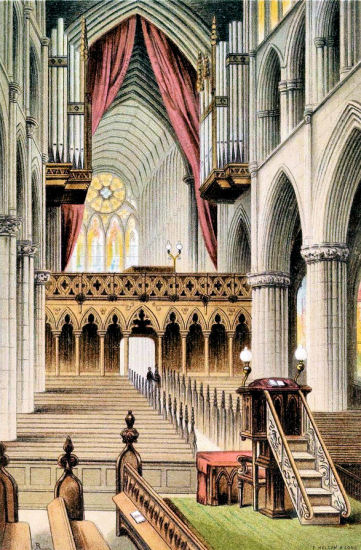
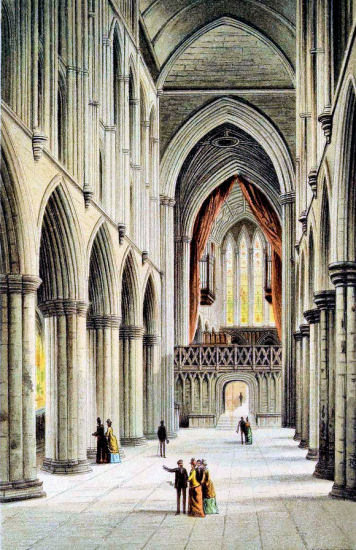
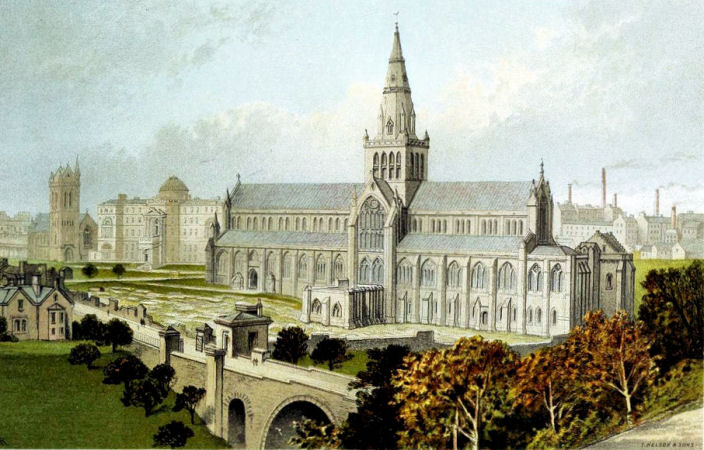
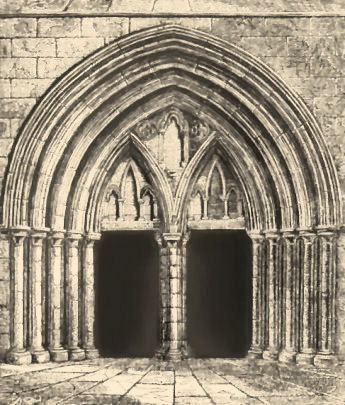
The list of the bishops and archbishops shows the names of many bishops-elect who never survived mediaeval mortal dangers long enough to celebrate their episcopal ordination.
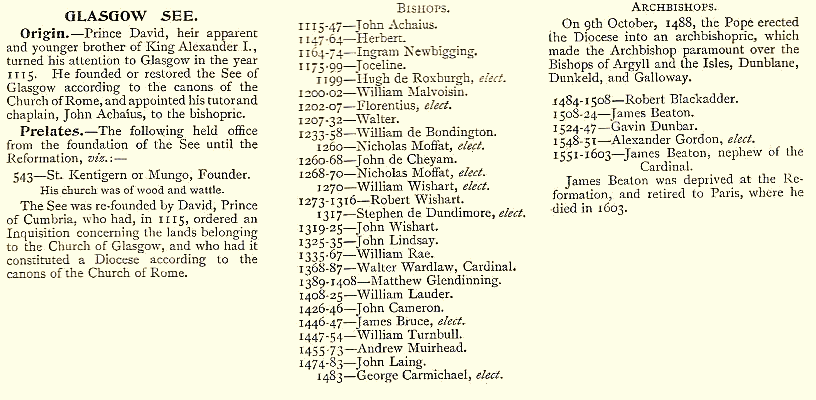
Beaton later acted as Scotland's ambassador at the French Court under King James VI, who had assumed the throne of his mother following a long period of minority.
Glasgow's church records and Beaton's diplomatic correspondence were deposited in the archives of the Scots College and at the Convent of the Chartreuse of Paris. The Scots College of Paris would subsequently hold the artefacts and private royal memoirs of the exiled House of Stuart, the Jacobite party of Britain.
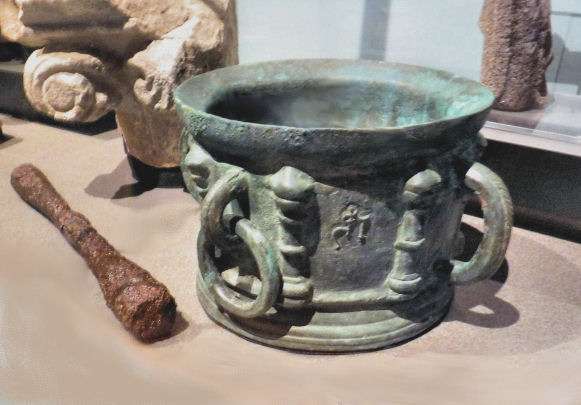
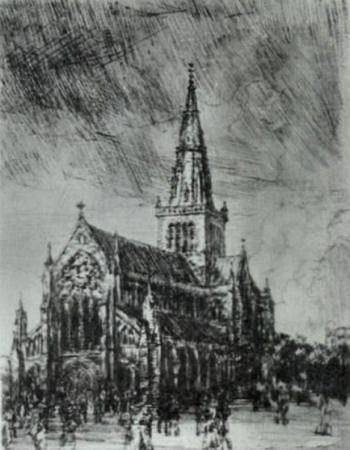
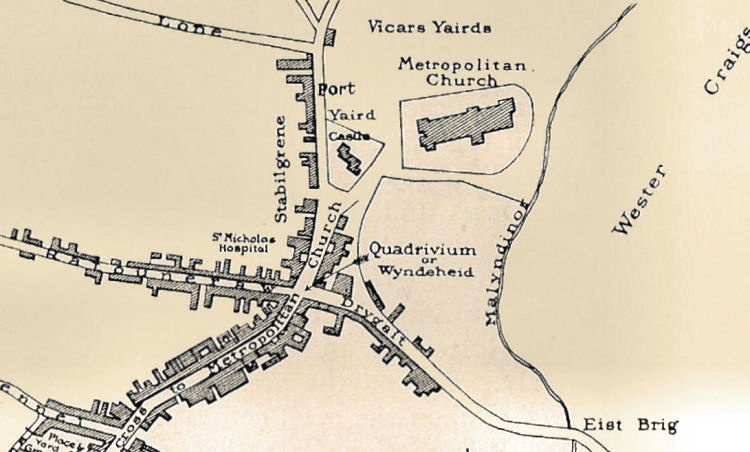
Quadrivium is Latin for "four ways", while the more popular Scots name for this crossroads was "Wyndeheid".
The Cathedral is shown as a Metropolitan Church, indicating Glasgow's status as a city with a Metropolitan Archbishop overseeing the surrounding dioceses.
The Archbishop lived in the castle nearby, which gave its name to today's Castle Street.
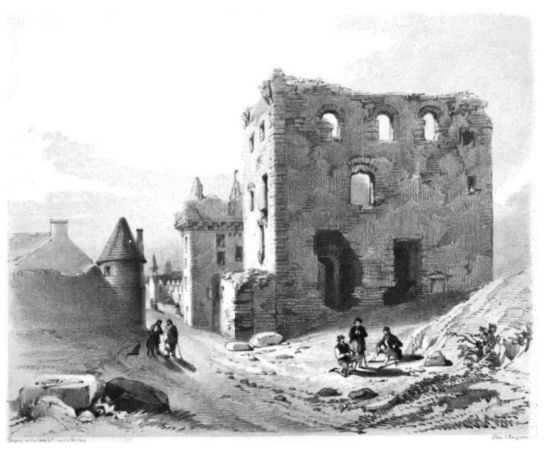
The structure suffered great damage during the Reformation, being seen as a centre of ecclesiastical power. The castle was besieged at various times during this period.
By 1720 the castle had been reduced to a mere quarry, with many stones removed for the erection of new buildings.
The ruins of the castle were razed in 1792 when work began on the first Royal Infirmary which was demolished around 1900. The site is now the occupied by the St Mungo Museum of Religious Art, where the castle's old foundations were exposed during construction.
The engraving above was made from an accurate drawing of the remains prior to their removal.
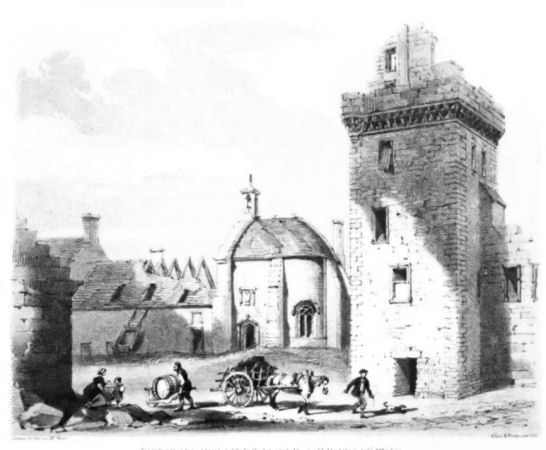
St Nicholas Hospital was established in 1456 by Bishop Andrew Muirhead and endowed with an income for the care of both laymen and priests.
In 1789 the ruins of the hospital were acquired by the magistrates of Glasgow and were demolished with the exception of the building now known as Provand's Lordship, illustrated below.
The house's current title dates from 1562 when Mary Queen of Scots granted the lands of Provan to William Baillie, a canon of the Cathedral. Baillie's possession of the house had been confirmed by Royal Charter by the Queen.
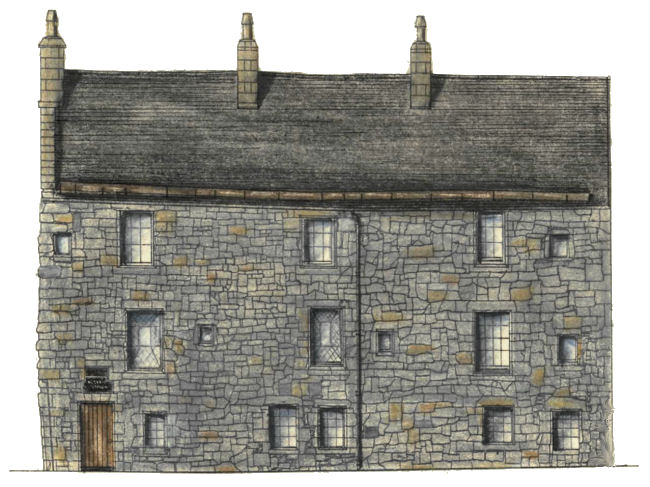
The outside of the house, with its 3 storey random rubble stonework is as much a museum piece as the artefacts within, as it gives us a rare insight into the domestic architecture of early Glasgow.
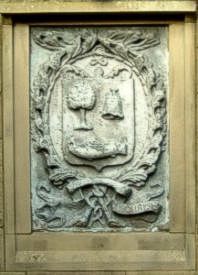
One of the garden walls features a very old sculpted Glasgow coat of arms (above); elsewhere in the cloisters the walls are adorned with the "Tontine Faces" recovered from the long demolished Town Hall in Trongate.
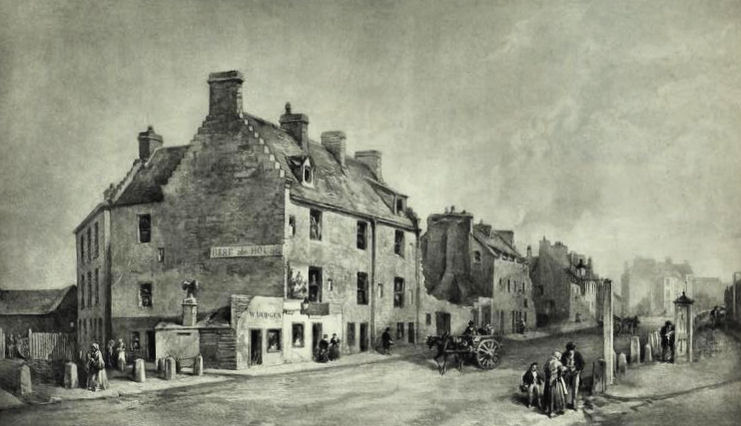
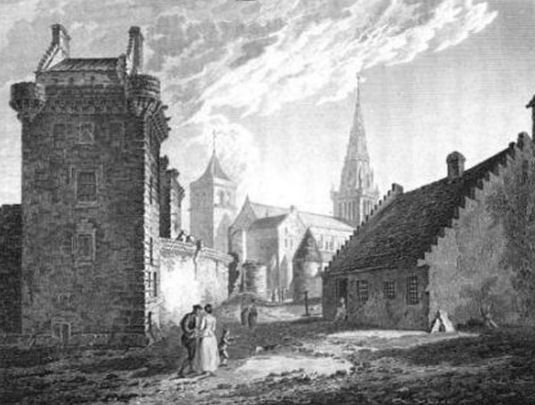
The brief history of the Glasgow Necropolis, shown below, has been extracted from The People's History of Glasgow, published in 1899.
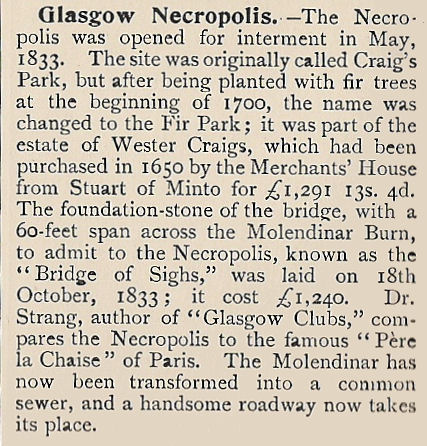
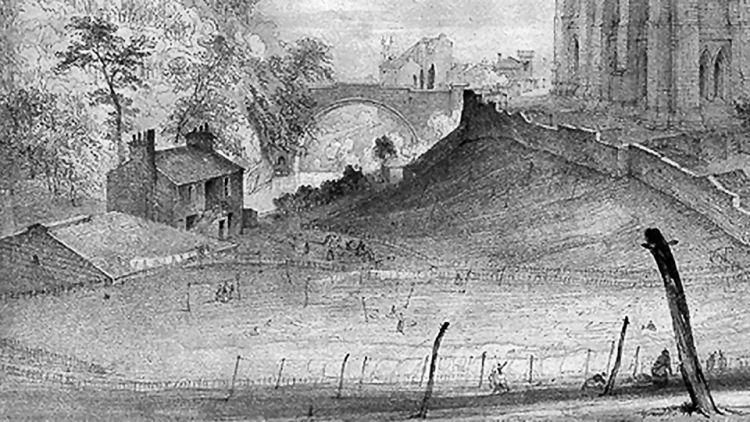
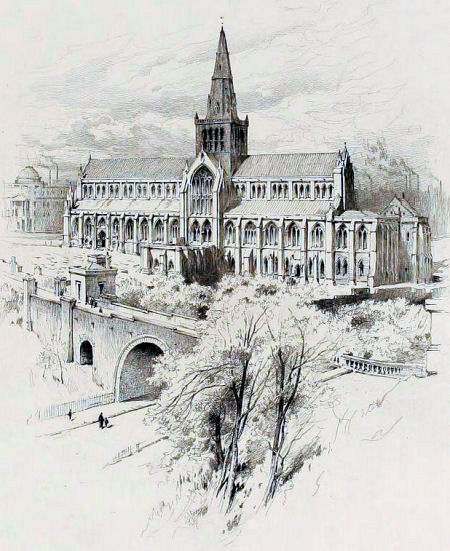
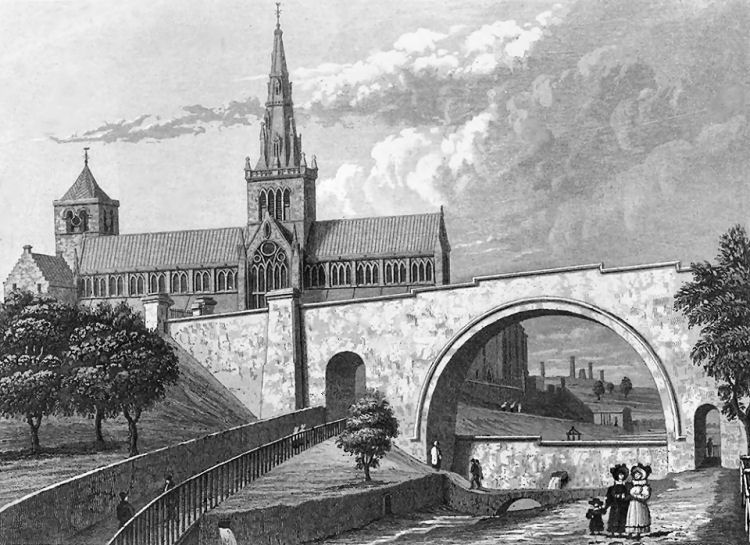
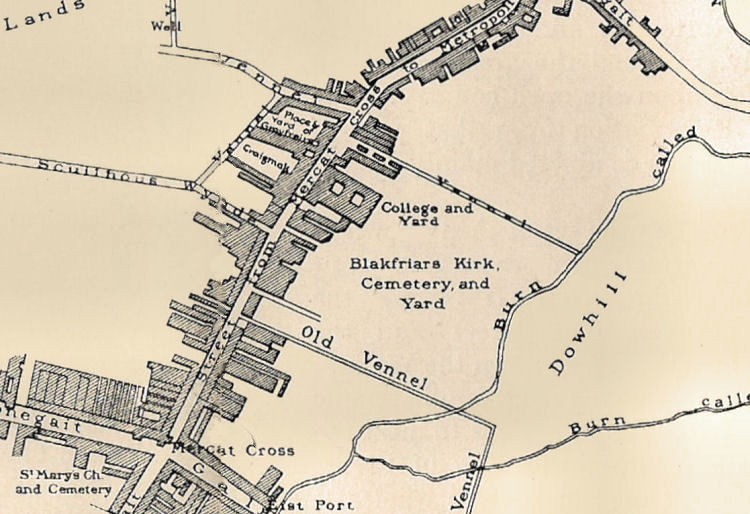
The secular part of the city was based around the Mercat Cross, the present day Glasgow Cross.
This area is featured in my Merchant City page.
Glasgow's status as a pre-Reformation ecclesiastical centre is shown by the number of religous institutions to be found within such a small area.
Two religous orders, the Franciscan "Grayfriars" and the Dominican "Blakfriars", owned land and property in the area.
The site of Glasgow University is shown on the map just north of Blackfriars monastery as "College and Yard"


The replacement church which opened for public worship on 18th January 1702 is shown in the engraving above. Strangely, it retained the name of Blackfriars, despite the fact that the Dominicans had long been absent from the city.
This church was acquired for railway redevelopment in 1875 and subsequently demolished.
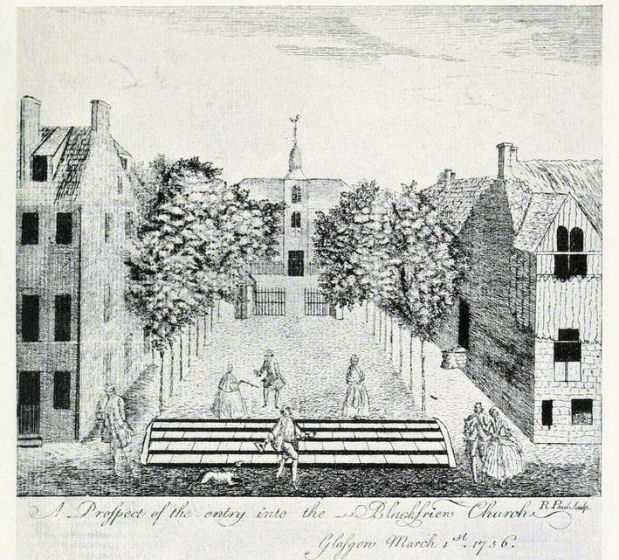
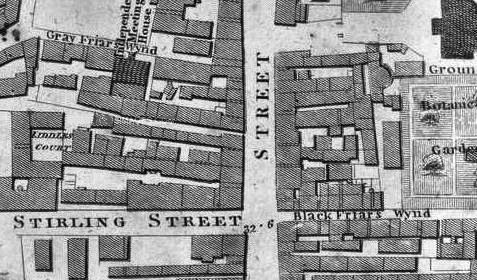
Following the turmoil of the Reformation, the Dominicans did not return to Glasgow until the 1960's.
Glasgow's Dominican community has been based in St Columba's Church since 2005. St Columba's is an "A" listed building designed by Jack Coia around the time of the outbreak of World War II.
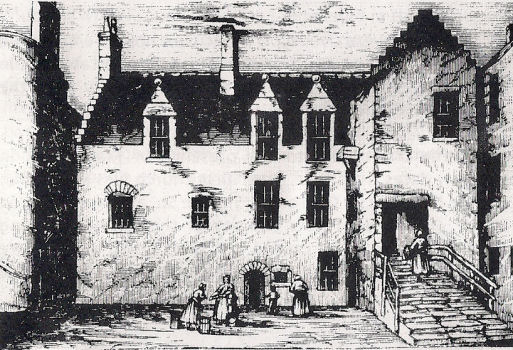
They became established in Glasgow in 1476 at Grayfriars Wynd on the western side of High Street, opposite the University.
The friars returned to post-Reformation Glasgow in October 1868 and later made their home at the St Francis Church and Friary in Cumberland Street, Gorbals. In the 1990's they relocated to the former St Luke's building in Ballater Street, renamed as the Church of Blessed John Duns Scotus.
These buildings are featured in the Hutchesontown-Gorbals page of this website.
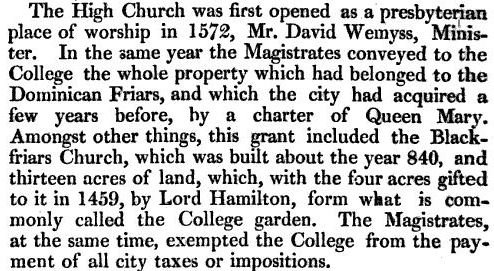
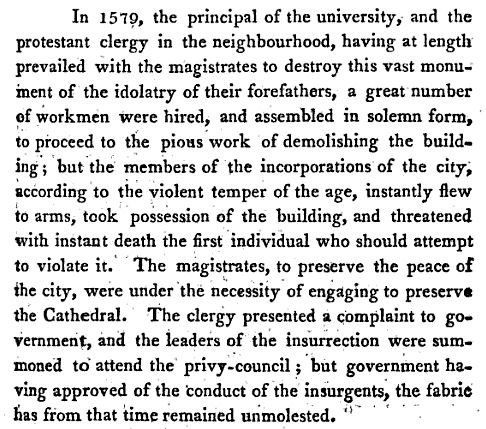
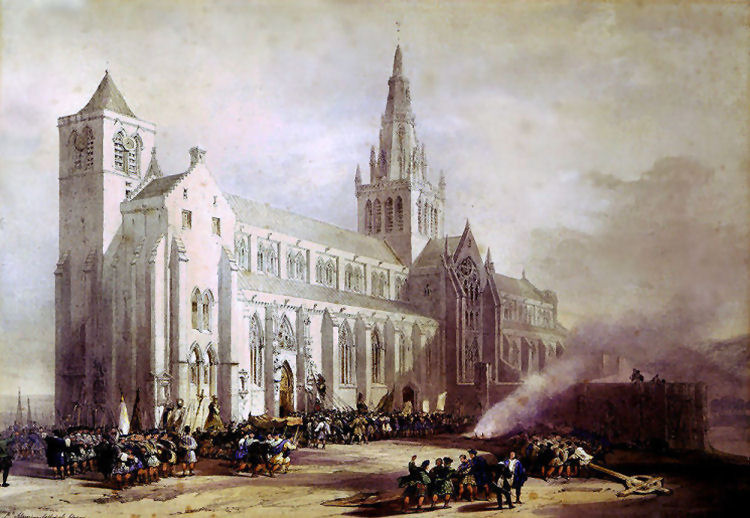
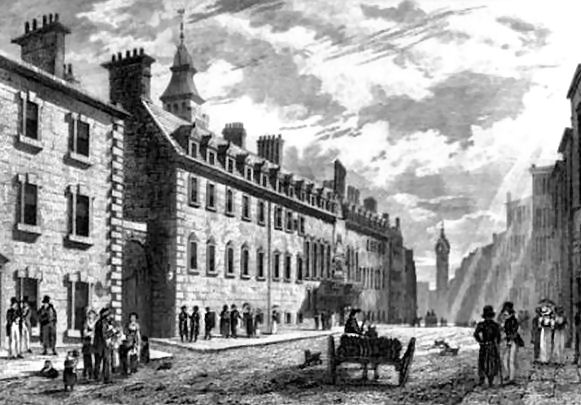
In 1458 Lord Hamilton granted the University four acres of ground adjacent to the Blackfriars monastery and in 1465 they transferred to buildings on the new site.
The University expanded its presence on the High Street until 1864 when the old College buildings and grounds, shown in the above engraving, were sold to the City Union Railway Company for £100,000. The University Senate used the proceeds to purchase the present day site of the campus at Gilmorehill, were the old College gateway was later re-erected.
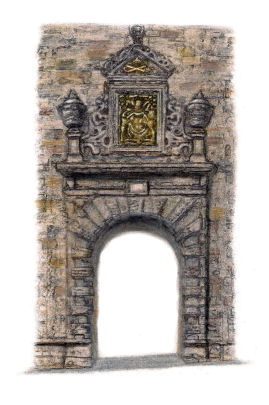
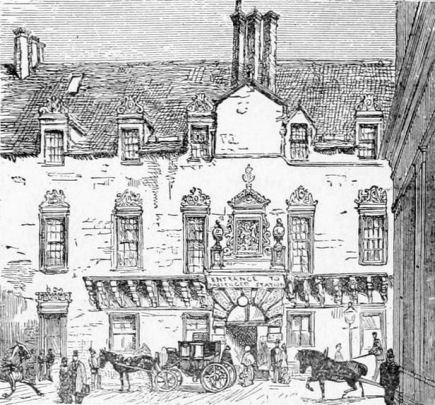
I have featured some drawings of the present day Glasgow University buildings in my Peripheral Glasgow page.

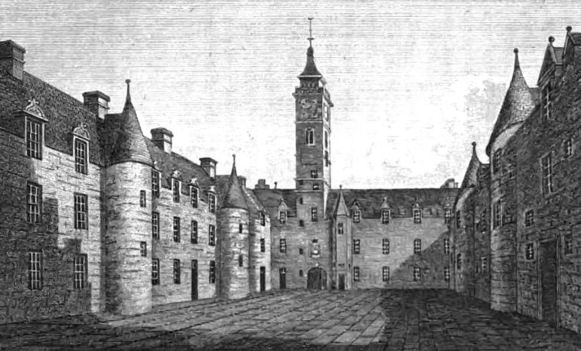
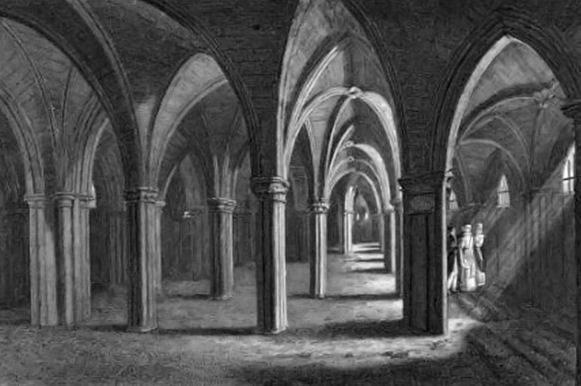


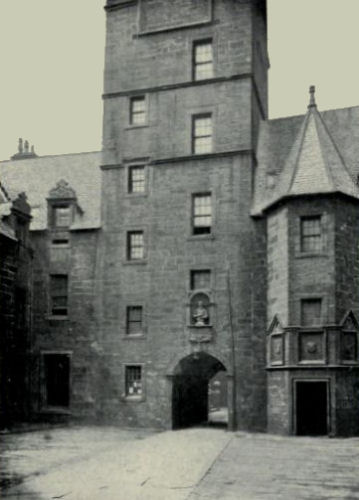
The Hunterian was Scotland's first public museum, designed in the Roman style with a façade of six doric columns supporting an ornamented pediment. The central dome was constructed with stone, topped with a glazed cupola. The museum was demolished in 1870, but its valuable contents were fortunately removed to Gilmorehill after the university moved there from High Street.

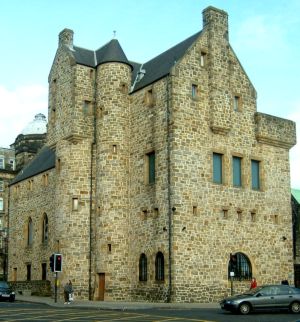
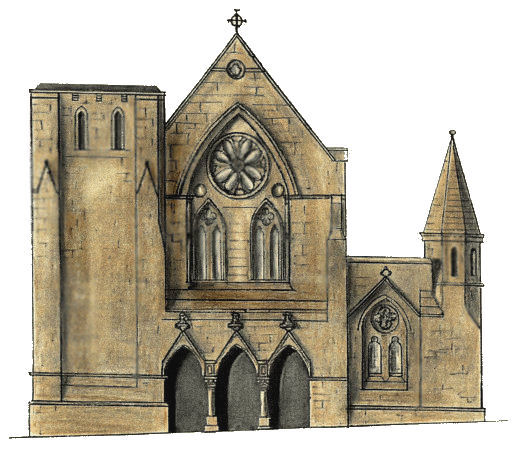
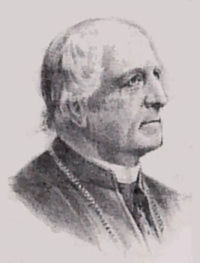 St Mungo's is different in style to most of Glasgow's later Victorian Catholic churches, which were commissioned by
Most Reverend Charles Eyre (right), who was consecrated to the See of Glasgow in 1869.
He assumed the office of Archbishop of Glasgow in 1878 following the restoration of the hierarchy in Scotland.
His favoured architects were Pugin & Pugin, who specialised in Italianate and Gothic styled churches.
The best local example of Peter Paul Pugin's design genius can be seem in the interior of St Peter's Church, featured in my
Partick Churches web page.
St Mungo's is different in style to most of Glasgow's later Victorian Catholic churches, which were commissioned by
Most Reverend Charles Eyre (right), who was consecrated to the See of Glasgow in 1869.
He assumed the office of Archbishop of Glasgow in 1878 following the restoration of the hierarchy in Scotland.
His favoured architects were Pugin & Pugin, who specialised in Italianate and Gothic styled churches.
The best local example of Peter Paul Pugin's design genius can be seem in the interior of St Peter's Church, featured in my
Partick Churches web page.
St Andrew's Roman Catholic Cathedral in Clyde Street, where Archbishop Eyre was based, is featured in my Merchant City page.
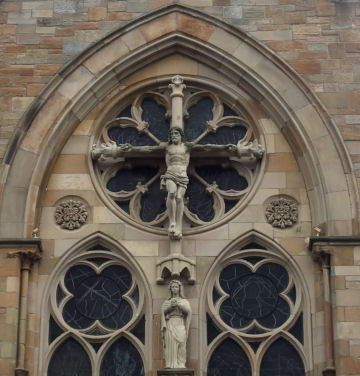
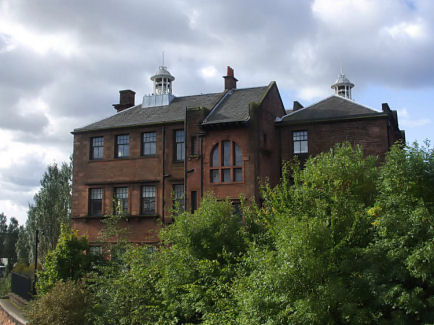
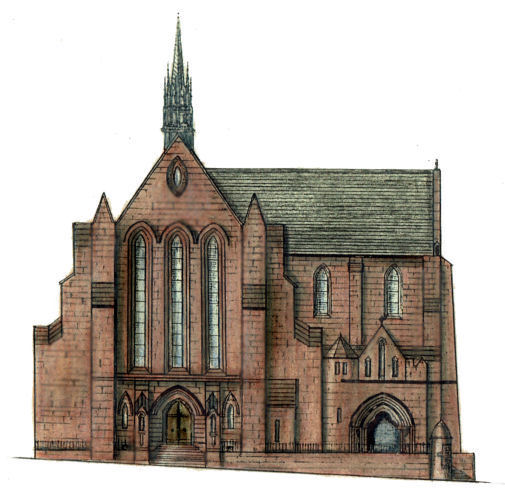
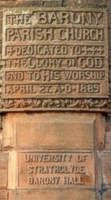
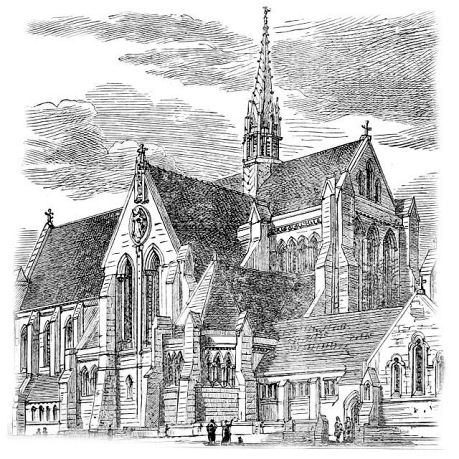
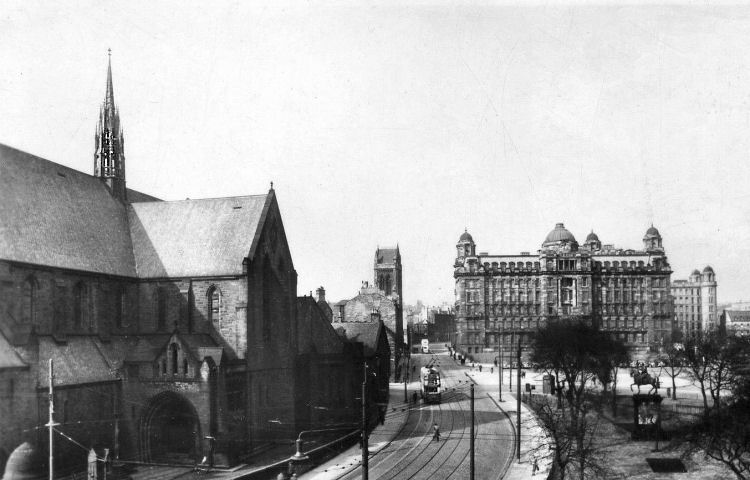
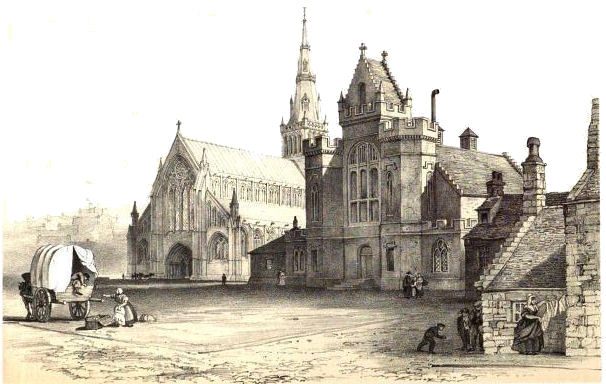

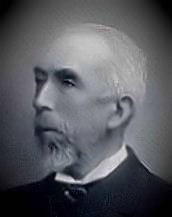 It was designed by John Honeyman (left) and completed in 1880. Honeyman was also responsible for the alterations of 1901.
It was designed by John Honeyman (left) and completed in 1880. Honeyman was also responsible for the alterations of 1901.
It has a refreshingly original Italianate styling, completly different from any of the surrounding buildings, sitting neatly amidst the gardens of the square.
The library, like many of the churches in areas of depopulation, no longer had a sufficient population to support its original purpose. In this case however demolition, rather than renovation and conversion, was the preferred option and the library was pulled down in 1998.
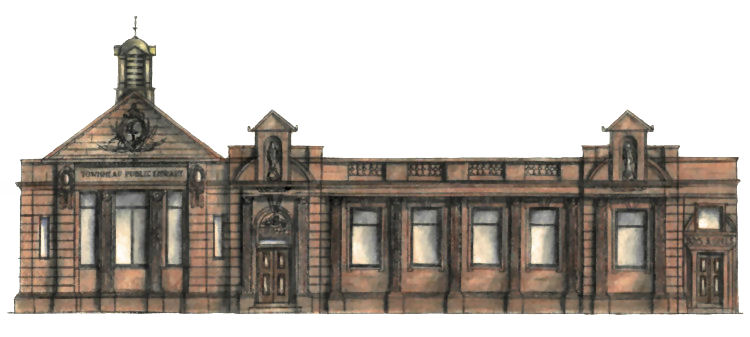
I have featured two black and white photographs of the library's interior from 1907 in my Carnegie Libraries of Scotland web site.
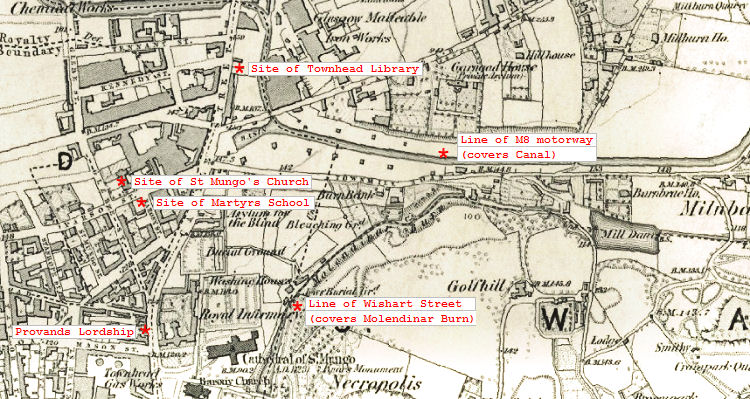

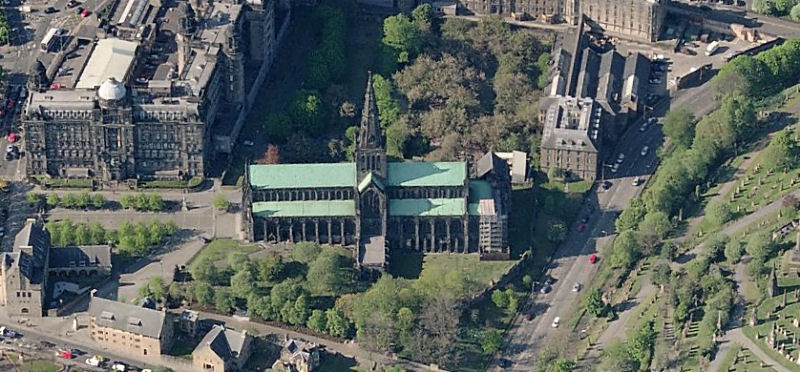
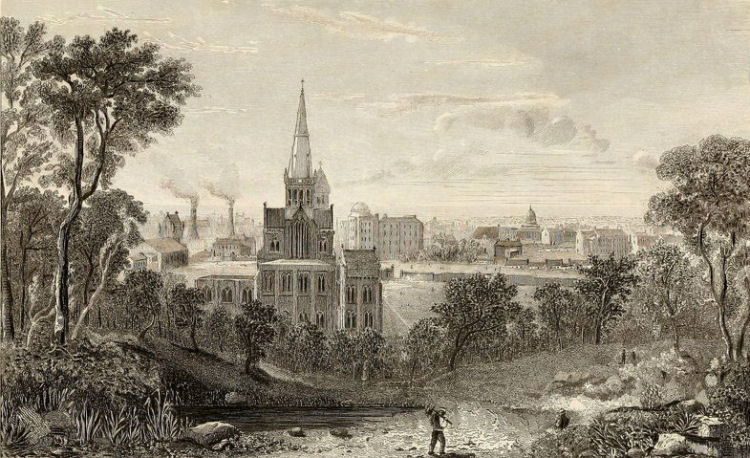
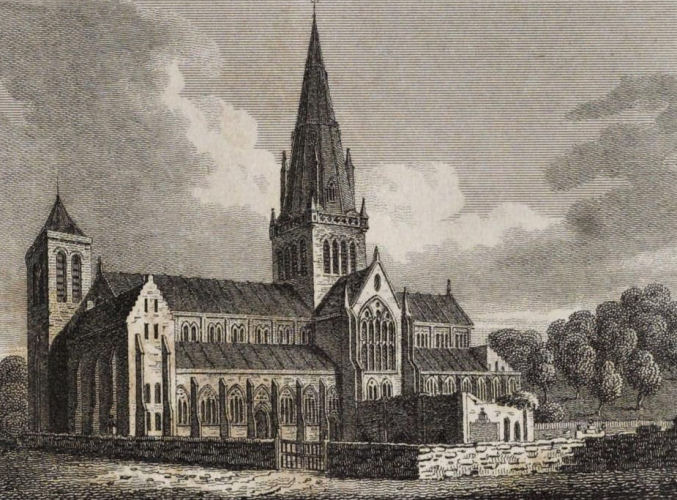
![]()
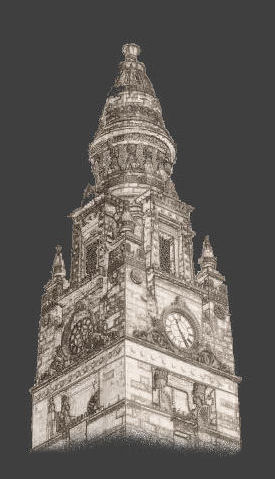 |
| |
|
|
||
|
|
|
|
|
|
|
|
|
|
|
|
|
|
|
|
|
|
|
|
|
|
|
|
|
|
|
|
|
|
|
|
|
|
|
|
|
|
|
|
|
|
All original artwork, photography and text © Gerald Blaikie
Unauthorised reproduction of any image on this website is not permitted.